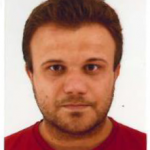PhD defense : Spin orbit torques measurements in Pt-based heavy metal / Ferromagnet heterostructures with in-plane magnetic anisotropy (June 07th, 2017)

On Friday, the 16th Of June 2017 at 14h00, Alexandru TRIFU from CEA (DRF/INAC/SPINTEC), will defend his PhD thesis entitled “Spin orbit torques measurements in Pt-based heavy metal / Ferromagnet heterostructures with in-plane magnetic anisotropy” Place : Amphithéâtre du CNRS bâtiment A-3ème étage – 25 rue des Martyrs, Grenoble Recent demonstrations of magnetization switching induced […]
Read moreNanotweezers and their remote actuation by magnetic fields (May 23rd, 2017)

We have developed arrays of innovative magnetic nanotweezers or “nanojaws” on silicon wafers, by a top-down approach using the fabrication techniques of microelectronics. The mechanical manipulation of micro- and nanometric objects relies on constantly evolving techniques, which are of great interest to the life sciences and biotechnologies. Numerous biomedical studies, either fundamental or applied to […]
Read morePhD defense : Development of low-noise magnetic tunnel junctions for magnetic field sensors (May 23rd, 2017)

On Thursday, the 22th Of June 2017 at 14h00, Myckael MOUCHEL from CROCUS TECHNOLOGY (DRF/INAC/SPINTEC), will defend his PhD thesis entitled “Development of low-noise magnetic tunnel junctions for magnetic field sensors” Place : Amphithéâtre Grenoble INP-PHELMA – 3 parvis Louis Néel, Grenoble Magnetic tunnel junctions based magnetic field sensors are one of the most promising […]
Read morePoster and talk prizes at Intermag Dublin (May 03rd, 2017)

Nearly twenty scientists from SPINTEC participated in Intermag Dublin (24-28 April 2017), among which two thirds were PhD students and post-docs. Paul Noël was awarded a session poster prize (Large and tunable spin Hall angles in Au-based alloys: from intrinsic to side jump contributions), while Jyotirmoy Chatterjee was one of the five finalists for the […]
Read morePhD defense : Ferromagnetic/nonmagnetic nanostructures for the electrical measurement of the spin Hall effect and the detection of domain walls (April 27th, 2017)

On Friday, the 12th Of May 2017 at 10h00, Van Tuong PHAM from UGA (DRF/INAC/SPINTEC), will defend his PhD thesis entitled “Ferromagnetic/nonmagnetic nanostructures for the electrical measurement of the spin Hall effect and the detection of domain walls” Place : Amphithéâtre du CNRS bâtiment A-3ème étage – 25 rue des Martyrs, Grenoble Spin−orbitronics is based […]
Read moreReview – Three-dimensional nanomagnetism (April 20th, 2017)

Amalio Fernandez-Pacheco, Robert Streubel, Olivier Fruchart, Riccardo Hertel, Peter Fischer, Russell P. Cowburn, Nature Comm. 8, 15756 (2017) Magnetic nanostructures are being developed for use in many aspects of our daily life, spanning areas such as data storage, sensing and biomedicine. Whereas patterned nanomagnets are traditionally two-dimensional planar structures, recent work is expanding nanomagnetism into […]
Read moreGiant and tunable spin-charge conversion at oxide interfaces (April 14th, 2017)

At the interface between the strontium titanate and the lanthanide aluminate forms a 2 dimensional electron system. By using a dynamical spin injection technique, we were able to demonstrate a record conversion yield between spin and charge current in this system, moreover that is tunable in amplitude and sign by an electrostatic gate, a premiere. […]
Read moreMillimeter-scale layered MoSe2 grown on sapphire and evidence for negative magnetoresistance (April 14th, 2017)

We have fabricated large-scale two-dimensional transition metal dichalcogenide (2D TMD) MoSe2, a promising candidate for electronics, valley-spintronics and optoelectronics, on insulating sapphire and have investigated its structural and transport properties. We have shown that the layered MoSe2 exhibits characteristics of a stoichiometric 2H-phase, a van der Waals epitaxy regarding the substrate and we have evidenced […]
Read moreCreation of unidirectional spin-wave emitters by utilizing interfacial Dzyaloshinskii-Moriya interaction (April 13th, 2017)

We have created an analytical model of spin waves in microscopic spin-wave waveguides in the presence of interfacial Dzyaloshinskii-Moriya interaction. By comparing to micromagnetic simulations, we have demonstrated that spatially periodic excitation sources can be used to create a uni-directional spin-wave-emission source whose properties can be predicted by our model. Since miniaturization of CMOS devices […]
Read moreMagneto-optical micromechanical systems for magnetic field mapping (February 17th, 2017)
Magnetic field mapping techniques have continuously been developed due to the necessity for determining the spatial components of local magnetic fields in many industrial applications and fundamental research. Several factors are considered for sensors such as spatial resolution, sensitivity, linear response, required proximity to the sample, as well as the ability to filter noise and […]
Read more



